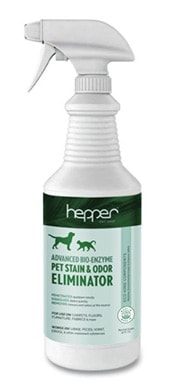How To Get Cat Urine Smell & Stains Out Of Furniture: 4 Practical Options
-
Pete Ortiz
- Last updated:
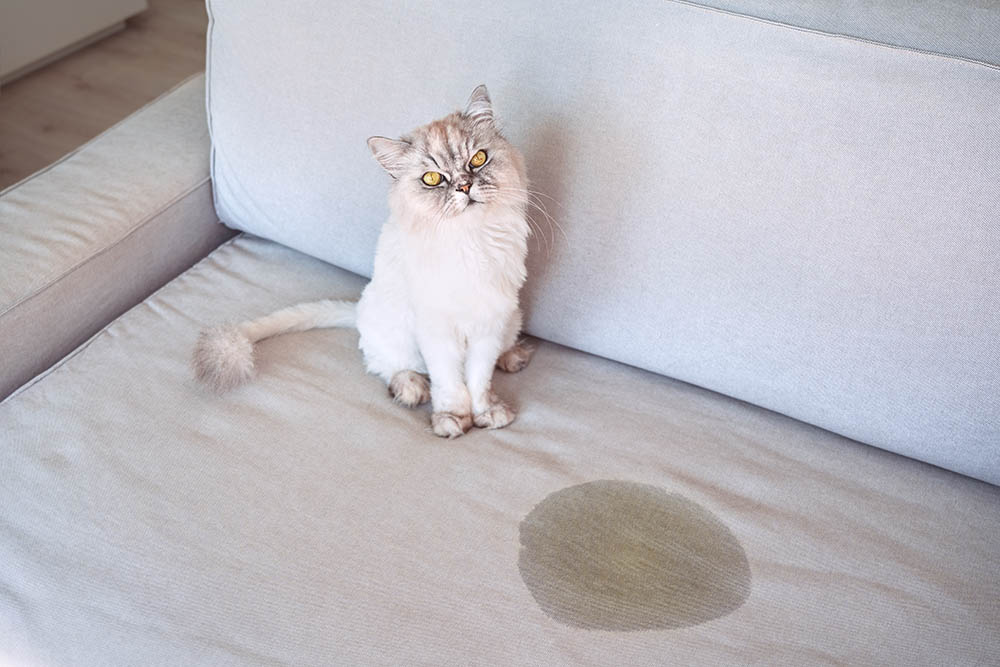
It’s not unusual for urine to smell, but what makes cat urine so bad is the fact that it decomposes in two stages. The first stage of decomposition is what we’re familiar with, as it involves the bacterium that produces the ammonia-like odor.
The second stage, however, is where the problem comes in. The decomposed urine ends up decomposing further, ultimately emitting compounds referred to as mercaptans. Commonly known as “thiols,” mercaptans are chemical compounds that are notoriously known for giving the skunk spray its signature smell.
You’re probably wondering what cleaning products are the best when it comes to taking care of such a mess. Luckily, we have a shortlist that we hope might come in handy.
Some Home Remedies For Cat Urine Smells & Stains
Enzyme Cleaners
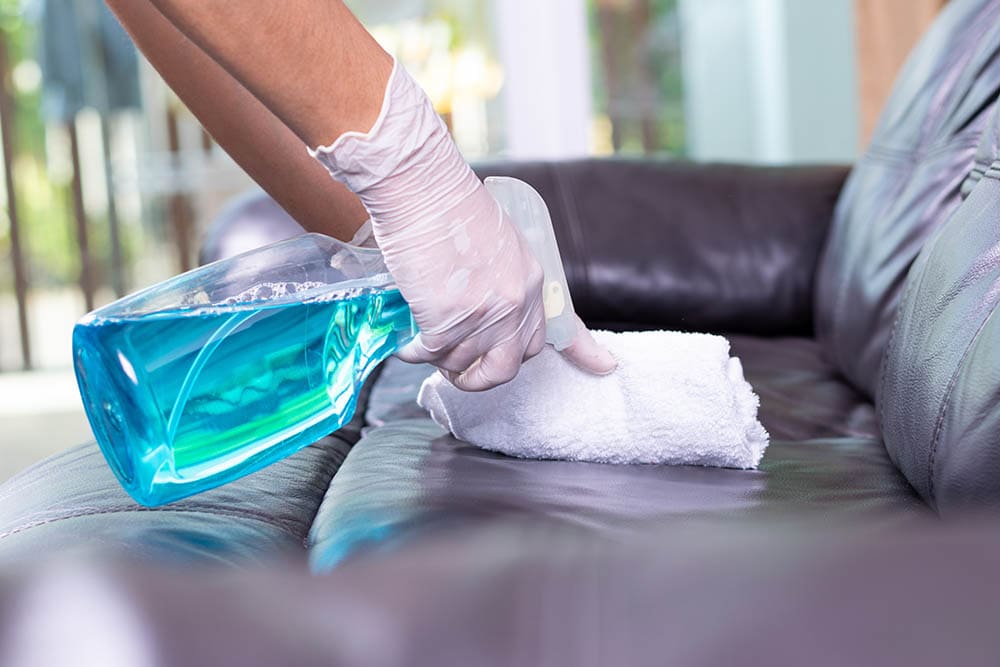
These types of cleaners have bacteria in them that emit enzymes capable of disintegrating molecules typically found in feces, urine, food, and any other organic material you can think of. After the enzymes are done doing what they do best, the bacteria will swoop in, and consume all the tiny molecules, only leaving behind clean fibers that are stain-free.
Enzyme-based cleaners are very common among pet owners, seeing as they come with odor-busting properties. Some of the products in the market are commercially manufactured to mask odors using fragrances, but these cleaners get the job done. They also happen to be non-toxic and rarely cause irritations. Unless, of course, you’re allergic to one of the ingredients used as a raw material.
Are you looking for an enzyme cleaner that can keep your house clean and your pet happy? We recommend the Hepper Advanced Bio-Enzyme Pet Stain & Odor Eliminator Spray, which permanently gets rid of the most stubborn stains and smells. There’s even a 100% satisfaction guarantee so you can try this cleaner risk-free! Click here to order your first bottle.
At House Grail, we’ve admired Hepper for many years, and decided to take a controlling ownership interest so that we could benefit from the outstanding products of this cool cat company!
It’s important to take note of the fact that enzymatic cleaners are more natural, in comparison to the conventional cleaner. Depending on how you look at it, this could be a good and/or a bad thing. It’s good in the sense that they’re mostly harmless to humans and pets, but bad because the enzymes sometimes lack the strength required to get rid of stubborn bacteria.
- Removes stains
- Rarely causes irritation
- Non-toxic
- Not as strong as chemical cleaners
Hydrogen Peroxide
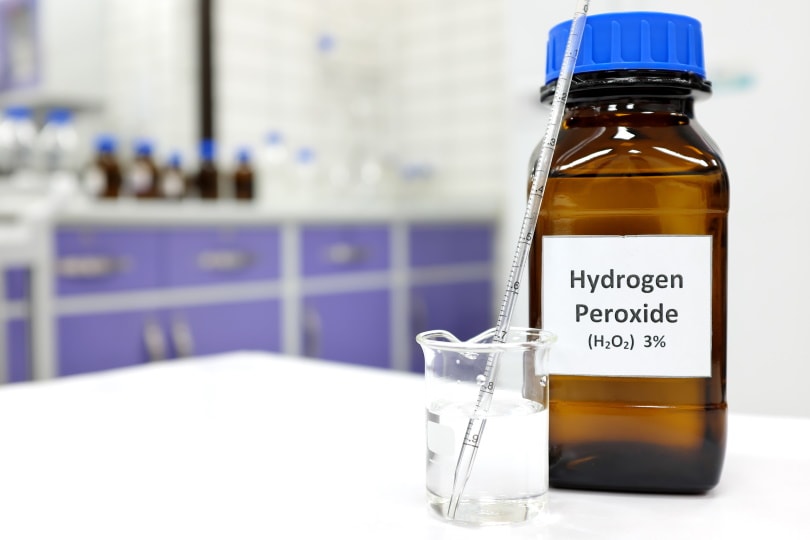
Hydrogen Peroxide is a powerful deodorizer. Once you apply it to the affected area, it will oxidize, kill off all the bacteria, and then break down any natural odor. That’s why you often see people mixing it with baking soda while trying to get rid of odors emanating from dishwashers and refrigerators.
We can’t really tell you how strong hydrogen peroxide is in the context of dealing with strong odors, but if you mix 3% of the solution with ¼ cup of baking soda, it will be strong enough to get rid of the skunk spray odor on your skin, and so should certainly work well for old cat urine stains too.
- Easily accessible
- Deodorizes
- kills off bacteria
- Effective at eliminating bad odor
- Can damage some surfaces
Baking Soda and Vinegar
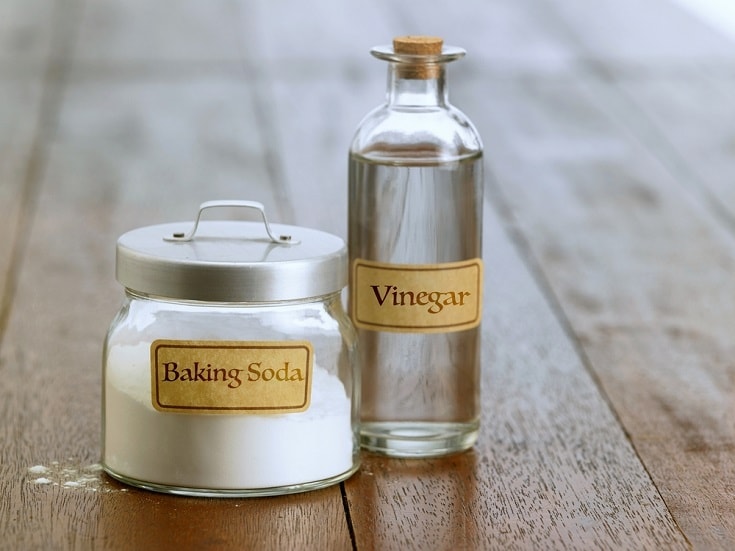
Some pet owners are now throwing out most of their run-of-the-mill commercially-produced cleaning products and turning to regular household items that can be used to make DIY cleaning products. That’s because they don’t want their pets to be exposed to the harsh chemicals used to manufacture the former. They would rather use baking soda and vinegar, which fall on opposite sides of a pH scale, but together, produce a harmless cleaning product.
Baking soda is the generic name for sodium bicarbonate. And most people use it when baking bread or cake, as it makes them puffy and big. Vinegar, on the other hand, is essentially diluted acetic acid—a byproduct of fermentation. When you mix these two items, what you’ll be doing is manipulating different chemical compounds to produce a product that’s effective and efficient at cleaning and disinfecting different surfaces. That’s why some people like to refer to the end product as the “One-Two Punch” cleaner.
- Two-in-one cleaning agent
- Isn’t toxic to pets or kids
- Easily accessible
- Must be applied together to be effective as a cleaning agent
Tools & Materials
Now that we’re done looking at the different cleaning products you could use to get rid of cat urine odors and stains, let’s look at the basic steps.
- Old rags
- Old towel
- Baking soda
- Dish liquid
- Hydrogen peroxide
- Vinegar
- Enzymatic cleaner
- Water
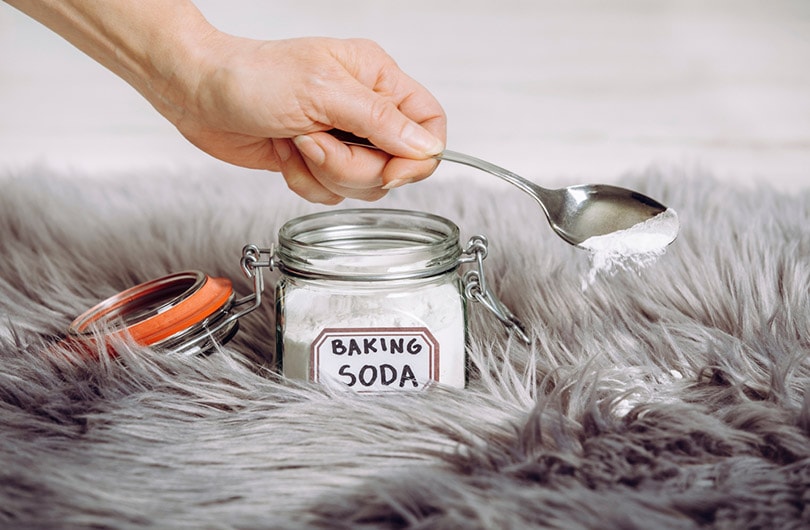
How To Get Cat Urine Smell & Stains Out Of Furniture (4 Options)
1. Blot up the urine
Figuring out whether a cat peed in the house or not is easy. Either, there’ll be some strange odor in the room, or you’ll immediately spot a conspicuous-looking stain. Assuming the stain is on your furniture, the first step is to look for a piece of an old rag, cloth, or paper towel, and blot up the urine. Apply a little pressure just to be sure whatever you’re using is absorbing as much urine as possible, because most of it will set deep into the furniture.
2. Rinse the affected area
Because we want to make sure that every last drop of urine has been washed out of the furniture, we’ll have to rinse that affected area with clean water. Once you’ve done that use a wet/dry vacuum, and start vacuuming.
If you’re thinking about using a steam cleaner, DON’T! The heat produced will only set the stain and make things worse.
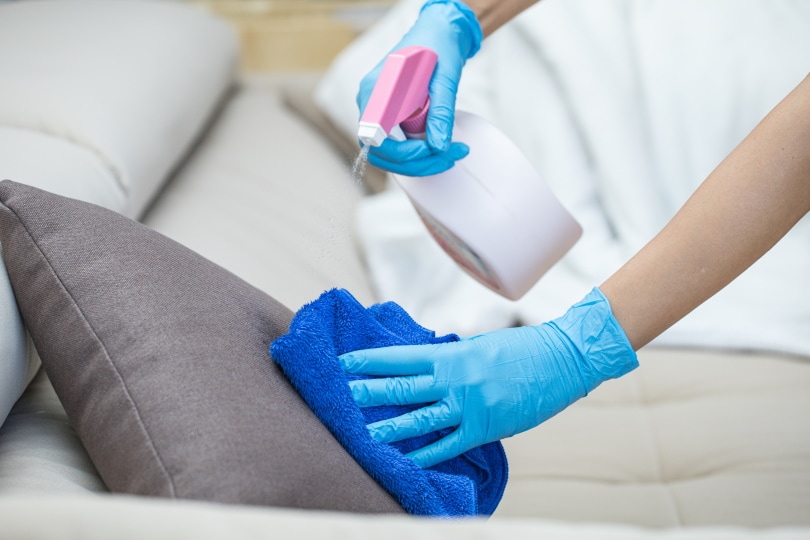
3. Apply your preferred cleaning product
You could either use hydrogen peroxide, an enzyme cleaner, vinegar, or baking soda. Douse the spot, allow it to settle for 20 to 30 minutes, and blot it using an old rag. It has to be clean, though.
4. Mask the odor
This last step is important, as masking that odor will ensure your cat doesn’t come back and mark that territory as their personal space. There are tons of different products to use, but cats tend to dislike the smell of citrus, so this is a great option.
The only thing left to do is to allow the furniture to dry. And if the smell is still lingering, repeat the process one more time.
Final Thoughts
Discouraging your cat from urinating in a particular area is not all that difficult. Once you’re done cleaning, you could play with them in that same spot using their favorite toys, or serve food in a bowl and place it there. Since they are creatures of habit, they’ll right away remember where they ate, and choose a different area to pee. Hopefully, in a kitty box or outside.
Featured Image Credit: Creative Cat Studio, Shutterstock
Contents


